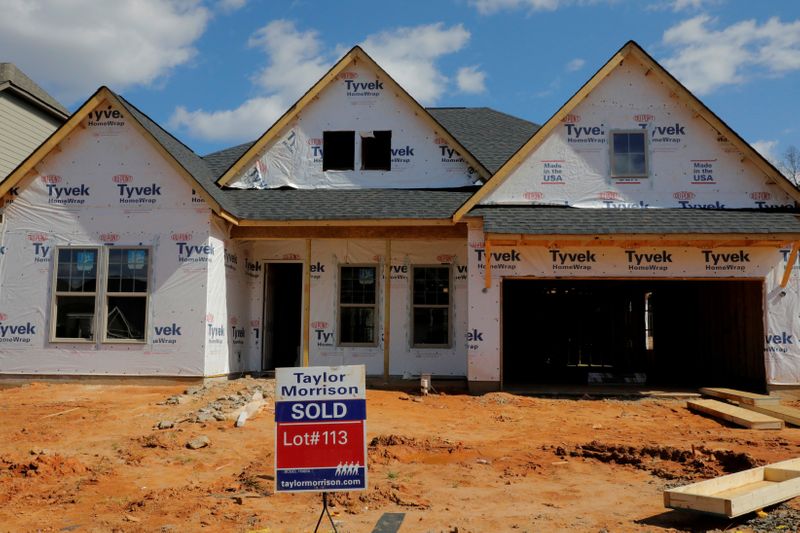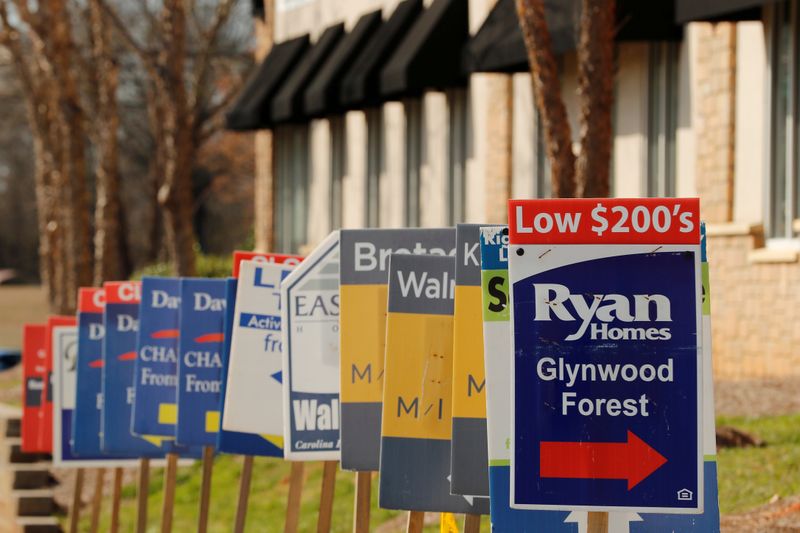WASHINGTON (Reuters) – Sales of new U.S. single-family homes unexpectedly fell in September after four straight monthly increases, but the housing market remains supported by record low mortgage rates and demand for more space as the COVID-19 pandemic drags on.
The decrease in sales reported by the Commerce Department on Monday followed data last week showing single-family homebuilding and permits racing to levels last seen in 2007 in September. Confidence among homebuilders hit a record high in October, while sales of previously owned homes jumped to their highest level in more than 14 years in September.
“While there could be some ups and downs along the way, we still look for strength in the housing market as low mortgage rates boost activity and earlier pent-up demand for housing is released,” said Daniel Silver, an economist at JPMorgan in New York.
New home sales fell 3.5% to a seasonally adjusted annual rate of 959,000 units last month. August’s sales pace was revised down to 994,000 units from the previously reported 1.011 million units. Economists polled by Reuters had forecast new home sales, which account for about 12.8% of housing market sales, rising 2.8% to a rate of 1.025 million units.
New home sales surged 32.1% year-on-year. New home sales are counted at the signing of a contract, making them a leading housing market indicator. September’s monthly decline could, however, be flagging a slowdown in housing market momentum heading into the fourth quarter.
Applications for loans to purchase a home have dropped for four straight weeks. While homebuilder confidence is at historic highs, shortages of land, labor, lumber and other key building materials are lengthening construction times.
“This month’s new home sales figures indicate that the housing market might be finally losing some steam,” said John Pataky, executive vice president at TIAA Bank in Jacksonville, Florida.
Stocks on Wall Street were trading lower, setting the Dow for its worst day in more than seven weeks, dragged down by rising new coronavirus cases. The PHLX housing index <.HGX> fell. The dollar rose versus a basket of currencies. U.S. Treasury prices were higher.
BRIGHT STAR
Though the COVID-19 pandemic has bruised the economy, it has boosted the housing market as Americans flee from city centers to the suburbs and low-density areas in search of more space for home offices and schooling. Staggering unemployment, which has left 23.2 million people on jobless benefits, has disproportionately affected low-wage workers.
Home sales have been concentrated in the single-family segment and in the higher price ranges. Both first-time and second-home buyers have been active in the market, with bidding wars reported in some parts of the country.
Last month’s decline in new home sales did not change expectations that the housing market likely contributed to a sharp rebound in economic activity in the third quarter. Growth estimates for the July-September quarter are as high as a 35.3% annualized rate, which would recoup roughly two-thirds of the output lost because of the pandemic.
The economy contracted at a 31.4% pace in the second quarter, the deepest decline since the government started keeping records in 1947. The government is scheduled to publish its snapshot of third-quarter GDP on Thursday.
Third-quarter GDP growth was juiced up by government money, which has since run out. That together with the resurgence in coronavirus infections has led to projections of a steep slowdown in activity in the fourth quarter.
For a graphic on New home sales:
https://graphics.reuters.com/USA-STOCKS/oakvenxbgpr/nhs.png
“The housing sector should remain supportive of growth at least for the next couple of quarters as strong demand drives new construction,” said Andrew Hollenhorst, an economist at Citigroup in New York.
The 30-year fixed mortgage rate is at an average of 2.80%, according to data from mortgage finance agency Freddie Mac.
In September, new home sales tumbled 28.9% in the Northeast. They fell 4.7% in the South, which accounts for the bulk of transactions, and dropped 4.1% in the Midwest. But sales increased 3.8% in the West.
The median new house price increased 3.5% to $326,800 in September from a year ago. New home sales last month were concentrated in the $200,000 to $399,000 price range.
There were 284,000 new homes on the market last month, up from 282,000 in August. At September’s sales pace it would take 3.6 months to clear the supply of houses on the market, up from 3.4 months in August. Just over two-thirds of the homes sold last month were either under construction or yet to be built.
“The share of homes sold but not yet started continues to trend upwards,” said Doug Duncan, chief economist at Fannie Mae in Washington. “This suggests that homebuilders are struggling to keep up with demand.”
(Reporting by Lucia Mutikani; Editing by Chizu Nomiyama and Andrea Ricci)




















